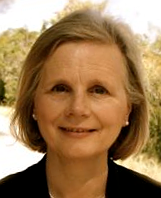Tony and Felicity Dale live in Austin, Texas and have been a huge and beneficial influence in the thoughts and lives of many, especially those engaged in simple and organic forms of church life. They have many gifts, both of them are effective teachers, for example.
Recently, Felicity has been writing a great deal about the place of women in the church. She has many wonderful insights into an area that has often been problematic. I believe she is being used by Papa to open doors that have been closed far too long. I know Tony will have been right there with her, quietly oiling the rusty hinges for all he's worth!
I want to commend Felicity's efforts to all my readers. To the women amongst you because she is speaking release and empowerment. To the men because you can all help by encouraging the women in your lives to receive the truth she is sharing. And to those (men and women) who are unsure about the place and function of women in church life because there is much wisdom and truth in Felicity's writing on this topic.
I believe Felicity's work on women and church is of huge importance. What she is doing is fundamental to the next step in Papa's plan for his people, worldwide but particularly here in Western society where women have long been sidelined, particularly in church circles.
Reading Felicity's articles - Perhaps the earliest of her articles on women is 'A phone call to remember' back in April 2010. The latest (so far) is 'Women in Leadership: God's punishment?' published just yesterday. You can view the entire series as a growing set of pages, seven of them so far. They may eventually form the basis for a new book.
You will need to follow her blog (Simply Church) because she is turning out more good writing on the topic every week at present. She is on a roll! If you like you can sign up to receive future posts by email (visit Simply Church and look for 'Subscribe' near the top on the right hand side of the page - or just use this link).
Questions:
- Have you considered the Bible's teaching on women for yourself?
- It's easy to think that the way things are is the way they must continue. What are the dangers in doing this?
See also:
- His church and his heart - Journeys of heart and mind
- Kingdom women - Simply Church
- Place of women - Journeys of heart and mind
- Putting women in their place - Journeys of heart and mind
- Simply Church
- Spiritually gifted women - Assembling of the church
- Women must lead the church - Till he comes







